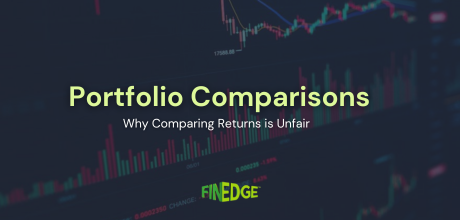3 Debt Mutual Fund Investment Myths to watch out for

While debt funds offer a safer option compared to equities, it's important to debunk these myths before diving in. Remember, terms like 'income' or 'fixed' don’t guarantee what they may seem to promise. Always do your due diligence and be aware of the risks involved, especially with GILT funds and FMPs. Debt funds are about managing risk, not avoiding it entirely!
The last year has been a tough one for debt fund investors who, buoyed by AMFI’s “Mutual Fund Sahi Hai” campaign, shifted into them from traditional investments in hordes. If you’re considering making a debt mutual fund investment, here are three myths you should watch out for.
Income Funds generate income
The term “income fund” has misled many an investor to falsely believe that this category of the fund is geared to generate a monthly income. Resultantly, many investors are disappointed when they fail to do so. In reality, income funds are a named so because they are category of debt fund that generates returns mainly by accruing the “incomes” from their underlying bonds. In other words, they rely less on the capital gain, and more on the regular coupon pay outs being made by the issuers of the securities within their portfolios. Don’t invest into income funds with the expectation that they’ll be providing you with an income on a regular basis. In fact, by choosing the dividend option in these funds, you’ll be paying a tax of 28.33 percent at source, which is an extremely tax inefficient way of generating an income.
GILT Funds are low risk in nature
GILT Funds or G-Sec funds invest their moneys into government securities, and this often misleads into believing that they are low in risk. This is an incorrect assumption, though. Although it’s a fact that GILT securities have very low default or credit risk (zero, on paper), their prices are actually very sensitive. G-Sec yields can fluctuate heavily depending upon changes in interest rates a country’s fiscal position. For instance, if the RBI were to raise interest rates, yields would go up and the prices of G-Secs would fall, thereby impacting the NAV’s of GILT oriented funds negatively. Here’s a case in point: when S&P downgraded India’s sovereign ratings in 2009, GILT fund NAV’s sank like a stone! In fact, most GILT funds have given a negative return since the start of 2018, and the 1-year return from most of them has been below 2%.
FMP's provide a guaranteed return
FMP’s or “Fixed Maturity Plans” are a type of close-ended debt fund that invest money into bonds, with the intent of holding them to maturity. Since they do not sell any bonds prior to their maturity, they eliminate interest rate risk, and purely retain the default risk or credit risk. Due to the word “fixed” being present in their names, FMP’s have led many investors to believe that they provide a “fixed” or guaranteed rate of return. However, this isn’t true FMP’s returns can fluctuate if any paper within their portfolio defaults – which is a possibility, since they mainly invest into AA rated bonds. Until 2010, fund houses could release data on “indicative yields”, which were, as the name suggests, an indicative return that the FMP could provide, if none of the bonds in its portfolio defaulted. However, this practice was banned by SEBI in 2010, as many Advisors were misusing this information to tout FMP’s are a “Fixed Return” product.
Your Investing Experts
Relevant Articles
From Coffee to Crorepati: Small Lifestyle Tweaks Gen Z Can Make to Start Investing Early
Gen Z is often told to “stop buying coffee” if they want to invest. But that misses the point. Building wealth isn’t about sacrificing everything you enjoy. It’s about understanding how small, everyday decisions shape long-term habits. Starting early even with modest amounts can quietly make a meaningful difference over time.
Why Comparing Investment Returns Can Be Misleading
At some point, most investors have compared their investment returns with a friend, a colleague, or a number they saw online and wondered why their outcomes looked different. While this instinct is natural, return comparisons are often incomplete and, in many cases, misleading. Understanding why returns differ is far more important than comparing the numbers themselves.
CAGR vs XIRR vs Absolute Return: Understanding Which Return Really Matters
When reviewing investment performance, investors often come across multiple return figures absolute return, CAGR, and XIRR. While these numbers may appear similar, they measure performance very differently. Understanding what each metric represents, and when to use it, is essential for making informed investment decisions and setting realistic expectations.
.png)
.png)

.png)